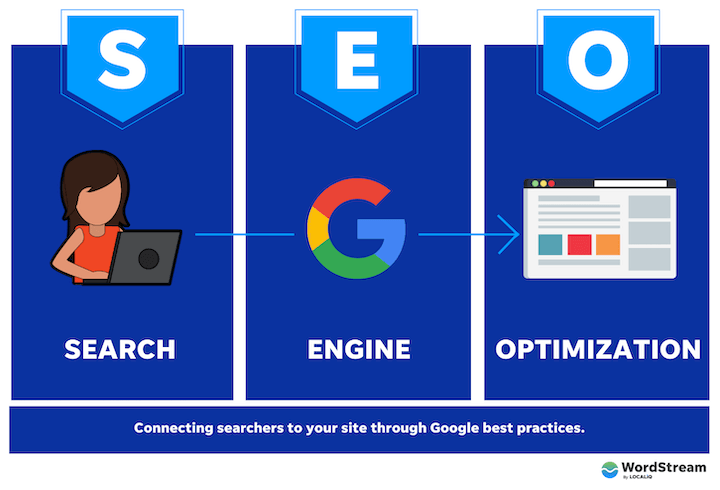Contents
- 1 Introduction:
- 2 1. Understanding Google’s Evolution: What’s Changing?
- 3 2. Keyword Research in 2025: Beyond Traditional Methods
- 4 3. Content is Still King: But Quality Matters More Than Ever
- 5 4. Technical SEO: The Backbone of Your Strategy
- 6 5. Link Building: Quality Over Quantity
- 7 6. Local SEO: Dominate Your Niche
- 8 7. Embrace Emerging Technologies
- 9 8. Monitor and Adapt: SEO is a Continuous Process
- 10 Conclusion
Introduction:
In the ever-evolving world of digital marketing, Search Engine Optimization (SEO) remains one of the most powerful tools for driving organic traffic to your website. However, as search engines like Google continue to refine their algorithms, staying ahead of the curve requires a deep understanding of emerging trends and strategies. By 2025, SEO will be more dynamic, user-centric, and technologically advanced than ever before. In this article, we’ll uncover the secrets to ranking higher on Google in 2025 and provide actionable tips to future-proof your SEO strategy.
1. Understanding Google’s Evolution: What’s Changing?
Google’s algorithms are constantly evolving to deliver better, more relevant search results. By 2025, we can expect several key changes:
- Increased Focus on User Experience (UX): Google will prioritize websites that offer seamless, fast, and engaging user experiences. Metrics like Core Web Vitals (loading speed, interactivity, and visual stability) will play an even bigger role.
- AI-Driven Search: With advancements in artificial intelligence (AI) and machine learning, Google’s algorithms will become smarter at understanding user intent and delivering personalized results.
- Voice Search Optimization: As voice assistants like Siri, Alexa, and Google Assistant become more popular, optimizing for voice search will be crucial.
- E-A-T and Content Quality: Expertise, Authoritativeness, and Trustworthiness (E-A-T) will continue to be critical ranking factors, especially for YMYL (Your Money or Your Life) websites.
- Visual and Video Search: With the rise of visual search tools like Google Lens, optimizing images and videos will become essential.

2. Keyword Research in 2025: Beyond Traditional Methods
Keyword research has always been the foundation of SEO, but by 2025, it will look very different. Here’s how to stay ahead:
a. Focus on Semantic Search
Google’s AI-powered algorithms are getting better at understanding context and user intent. Instead of targeting single keywords, focus on topics and long-tail phrases that align with user intent. Tools like SEMrush, Ahrefs, and Google’s Keyword Planner can help you identify semantic keywords.
b. Leverage Voice Search Keywords
Voice search queries are often longer and more conversational. For example, instead of typing “best Italian restaurants,” users might ask, “What are the best Italian restaurants near me?” Optimize for natural language and question-based queries.
c. Analyze Competitor Keywords
Use competitor analysis tools to identify gaps in your keyword strategy. Look for keywords your competitors are ranking for but you aren’t, and create content around those opportunities.
Also Read: https://edlnd.com/study-in-uk-a-guide-for-international-students-2025/

3. Content is Still King: But Quality Matters More Than Ever
Content has always been the backbone of SEO, but by 2025, the bar for quality will be higher than ever. Here’s how to create content that ranks:
a. Prioritize E-A-T
Google values content that demonstrates expertise, authoritativeness, and trustworthiness. To improve your E-A-T:
- Publish well-researched, accurate, and up-to-date content.
- Showcase author credentials and credentials.
- Build backlinks from reputable sources.
b. Create Comprehensive, In-Depth Content
Long-form content (2000+ words) tends to perform better in search rankings because it provides more value to users. Focus on creating pillar content that covers a topic comprehensively and supports it with cluster content targeting related subtopics.
c. Optimize for Visual and Video Content
Visual content like infographics, images, and videos will play a bigger role in SEO by 2025. Use descriptive alt text, captions, and file names to optimize images for search engines. For videos, create engaging, high-quality content and upload it to platforms like YouTube, which is the second-largest search engine.
d. Update Old Content
Regularly update your existing content to keep it relevant and accurate. Google favors fresh, up-to-date information, especially for time-sensitive topics.
Also Read: https://edlnd.com/think-about-study-in-australia-for-students-of-2025/
4. Technical SEO: The Backbone of Your Strategy
Technical SEO ensures that your website is crawlable, indexable, and optimized for search engines. By 2025, technical SEO will be more important than ever. Here’s what to focus on:
a. Core Web Vitals
Google’s Core Web Vitals measure user experience through three key metrics:
- Largest Contentful Paint (LCP): Measures loading speed.
- First Input Delay (FID): Measures interactivity.
- Cumulative Layout Shift (CLS): Measures visual stability.
Optimize these metrics by compressing images, using a Content Delivery Network (CDN), and minimizing JavaScript.
b. Mobile-First Indexing
With mobile devices accounting for over 60% of web traffic, Google now uses mobile-first indexing. Ensure your website is fully responsive and offers a seamless experience across all devices.
c. Structured Data and Schema Markup
Structured data helps search engines understand your content better. Use schema markup to highlight key information like reviews, FAQs, and product details. This can improve your chances of earning rich snippets, which boost visibility.
d. Site Speed and Performance
A fast-loading website is crucial for both user experience and SEO. Use tools like Google PageSpeed Insights to identify and fix performance issues.

5. Link Building: Quality Over Quantity
Backlinks remain one of the most important ranking factors, but by 2025, quality will matter more than quantity. Here’s how to build a strong backlink profile:
a. Focus on Authority Sites
Prioritize backlinks from high-authority, reputable websites in your niche. A single link from a trusted source can be more valuable than dozens of low-quality links.
b. Create Link-Worthy Content
Publish original research, case studies, and data-driven content that others in your industry will want to link to.
c. Build Relationships
Networking with influencers, bloggers, and industry leaders can help you earn valuable backlinks. Guest posting and collaborations are great ways to build relationships.
6. Local SEO: Dominate Your Niche
For businesses targeting a local audience, local SEO will be critical in 2025. Here’s how to optimize:
a. Optimize Google My Business (GMB)
Ensure your GMB profile is complete and up-to-date. Add photos, respond to reviews, and use relevant keywords in your business description.
b. Target Local Keywords
Include location-based keywords in your content, meta tags, and URLs. For example, “best coffee shop in New York” instead of just “best coffee shop.”
c. Build Local Citations
List your business on local directories and review sites like Yelp, TripAdvisor, and Yellow Pages.
7. Embrace Emerging Technologies
By 2025, emerging technologies like AI, voice search, and visual search will reshape SEO. Here’s how to adapt:
a. AI-Powered SEO Tools
Use AI tools like Surfer SEO, Clearscope, and MarketMuse to analyze content, identify gaps, and optimize for search intent.
b. Voice Search Optimization
Optimize for conversational queries and featured snippets, which are often used in voice search results.
c. Visual Search Optimization
Use high-quality images with descriptive file names and alt text. Consider adding structured data for images to improve visibility in visual search results.

8. Monitor and Adapt: SEO is a Continuous Process
SEO is not a one-time effort but an ongoing process. By 2025, staying ahead will require constant monitoring and adaptation. Here’s how to stay on top:
a. Track Performance
Use tools like Google Analytics and Google Search Console to monitor your website’s performance and identify areas for improvement.
b. Stay Updated
Follow industry blogs, attend webinars, and participate in SEO forums to stay informed about the latest trends and algorithm updates.
c. Experiment and Iterate
Don’t be afraid to experiment with new strategies and techniques. Analyze the results and refine your approach based on what works.
Conclusion
Ranking higher on Google in 2025 will require a combination of technical expertise, high-quality content, and a deep understanding of emerging trends. By focusing on user experience, leveraging AI-powered tools, and staying ahead of algorithm changes, you can future-proof your SEO strategy and dominate search engine rankings. Remember, SEO is a marathon, not a sprint. Stay consistent, adapt to changes, and keep your audience at the center of everything you do.
